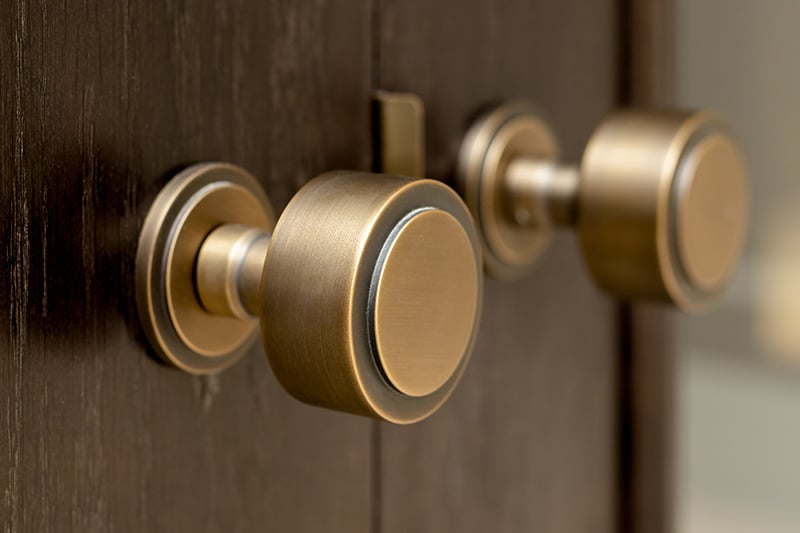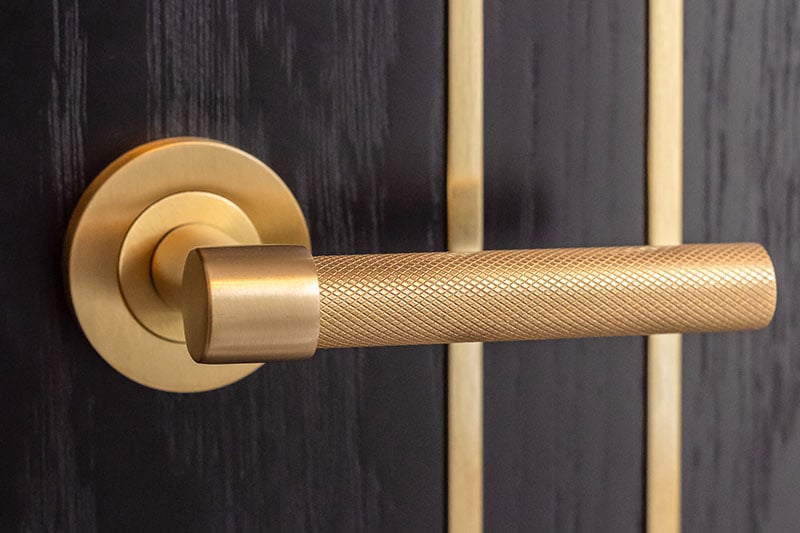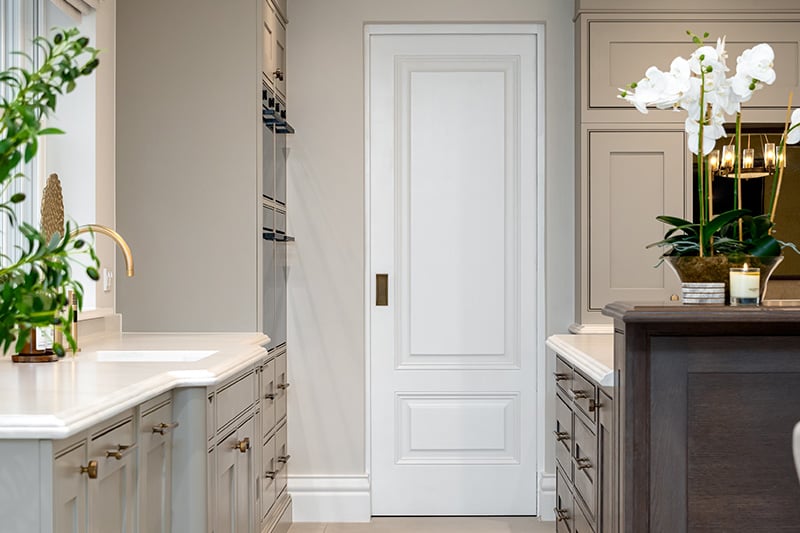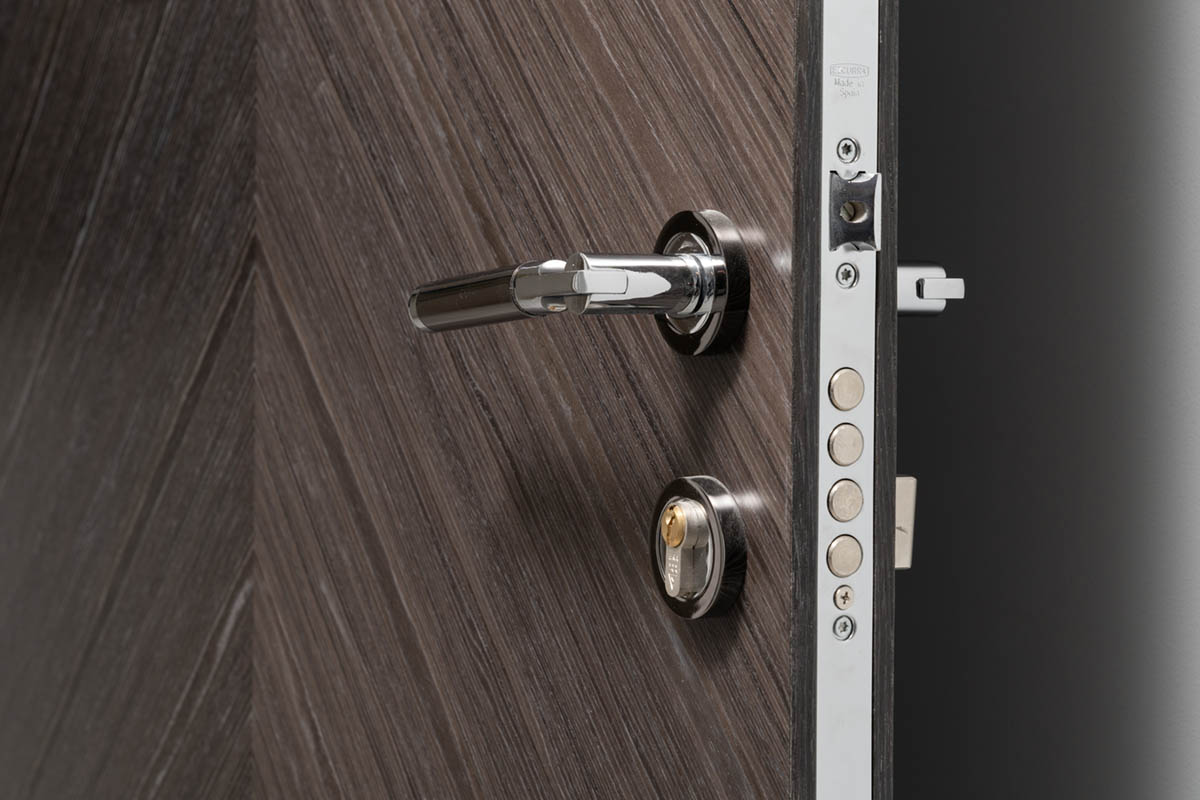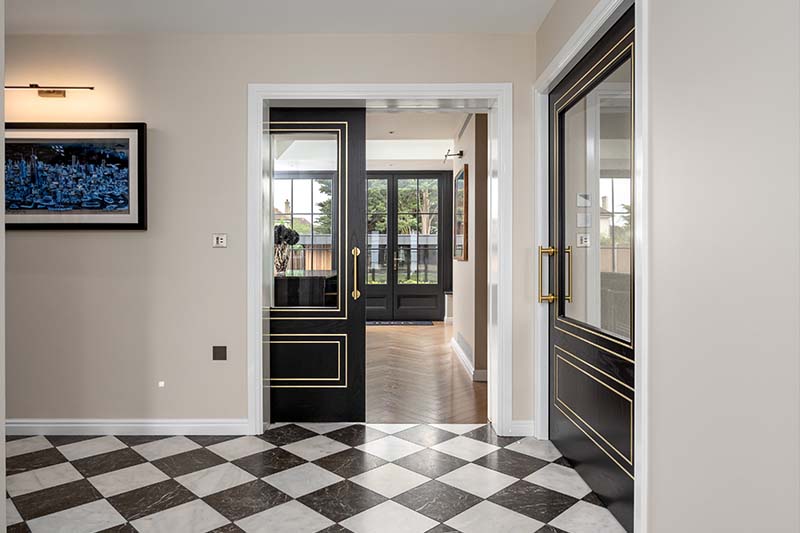Specification advice – locks and latches
20 July 2016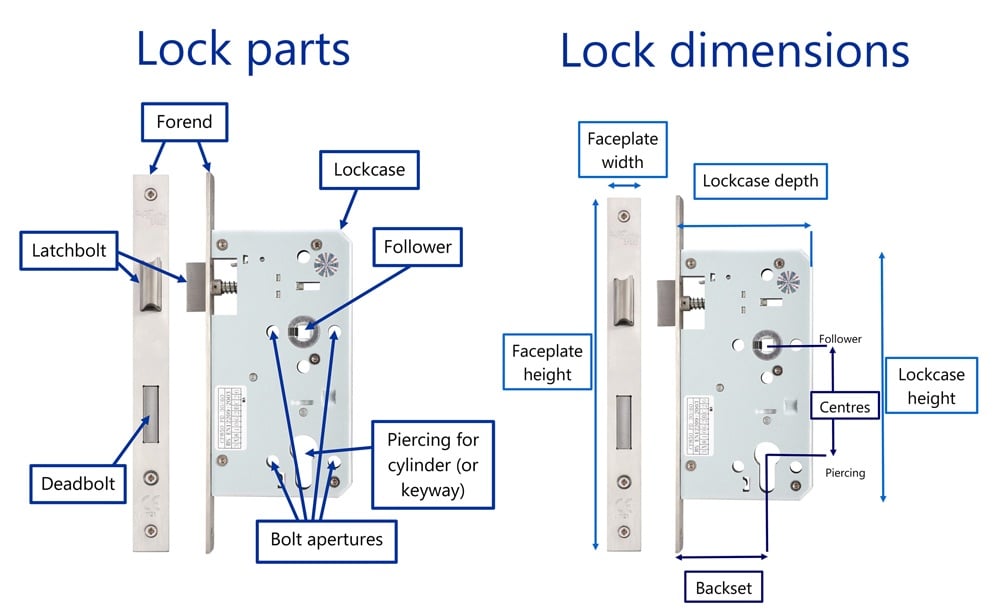
What are the correct names for the parts of locks and latches?
What do the dimensions, such as backset and centres, mean? And how do they impact on specifications?
These diagrams depict the parts and dimensions of locks and latches 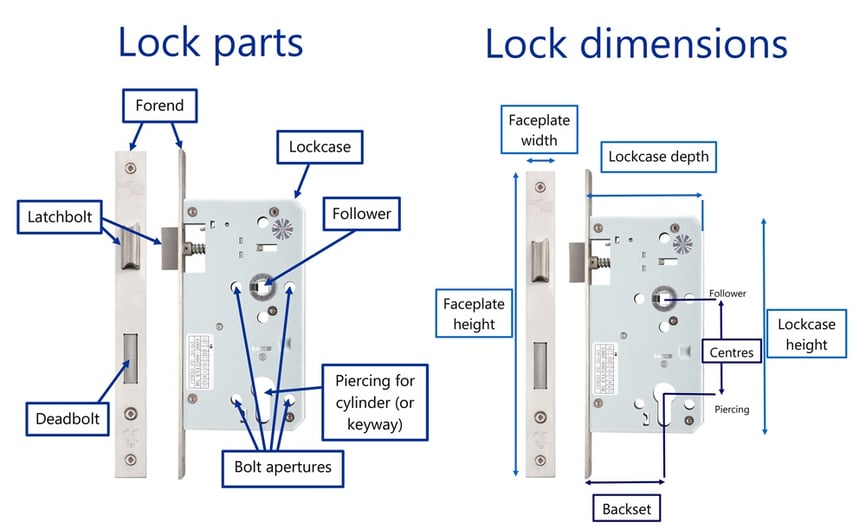
Lock/Latch Parts
Lockcase – The outer casing which conceals and protects the inner workings.
Forend – The forend is the visible part of the lock once fitted. It is important the finish matches the rest of the door furniture. Our forends are either single fixed forends or double forends; the former has the forend fixed and the latter has a dress plate so the right finish can be used. Forends are either square or radius.
Follower – This is the square hole in a circular section of metal/nylon that the spindle from the handle of the door furniture passes through. The follower receives the rotary actions from the handle/knob and transmits the instruction onto the latchbolt. Followers are 8mm² for latches; bathroom locks have a second follower which is 5mm² for a bathroom deadbolt, which receives operational instruction from the turn & release.
Deadbolt/Latchbolt/Lock – this is the locking bar of metal that when instructed protrudes from the lockcase into the door frame and thus the lock engages. The Latch has a spring behind it which pushes the latch out until depressed in; thus when the door is shut it depresses slightly over the strike plate and then engages in the strike plate in the frame when the door is fully shut. Latchbolts come in a number of styles, however all have a diagonal slant cut across the bolt to allow the bolt to slide across the strike plate. The Deadbolt is an unsprung rectangular bar of metal that moves only when mechanically thrown and withdrawn by a key/cylinder/Bathroom turn and release.
Piercing for cylinder/Keyway – This is the section for the cylinder (euro or oval). The cylinder instructs the deadbolt to throw the deadbolt or to withdraw the deadbolt. In traditional locks this is a keyway.
Bolt apertures –These are holes in the lockcase that allow back to back bolts to run right through the door and secure the handles either side of the door.
Lock/Latch Dimensions
Centres -This is the measurement between the centre of the handle follower and the centre of the keyhole (or euro/oval centre). Centres are typically 57mm for bathroom locks, 72mm for DIN standard locks and 47.5mm for euro profile sashlocks. This measurement is particularly important with handles on backplates. The centres are normally dictated by the size of the lockcase.
Backset – This is the measurement between the forend and the centre of the follower and/or keyhole. Common backsets are 44mm (64mm Lockcase) and 55mm (76mm lockcase). Ensure that the backset is sufficient for hands to pass between the handle/knob and the door stop, be particularly cautious when fire door stop is used.
Our locks and latches can be viewed here
Contact our customer service team on 01722 337060 or email mail@denleigh.co.uk. At Denleigh we in architectural ironmongery and bespoke internal feature doors for the residential sector.

